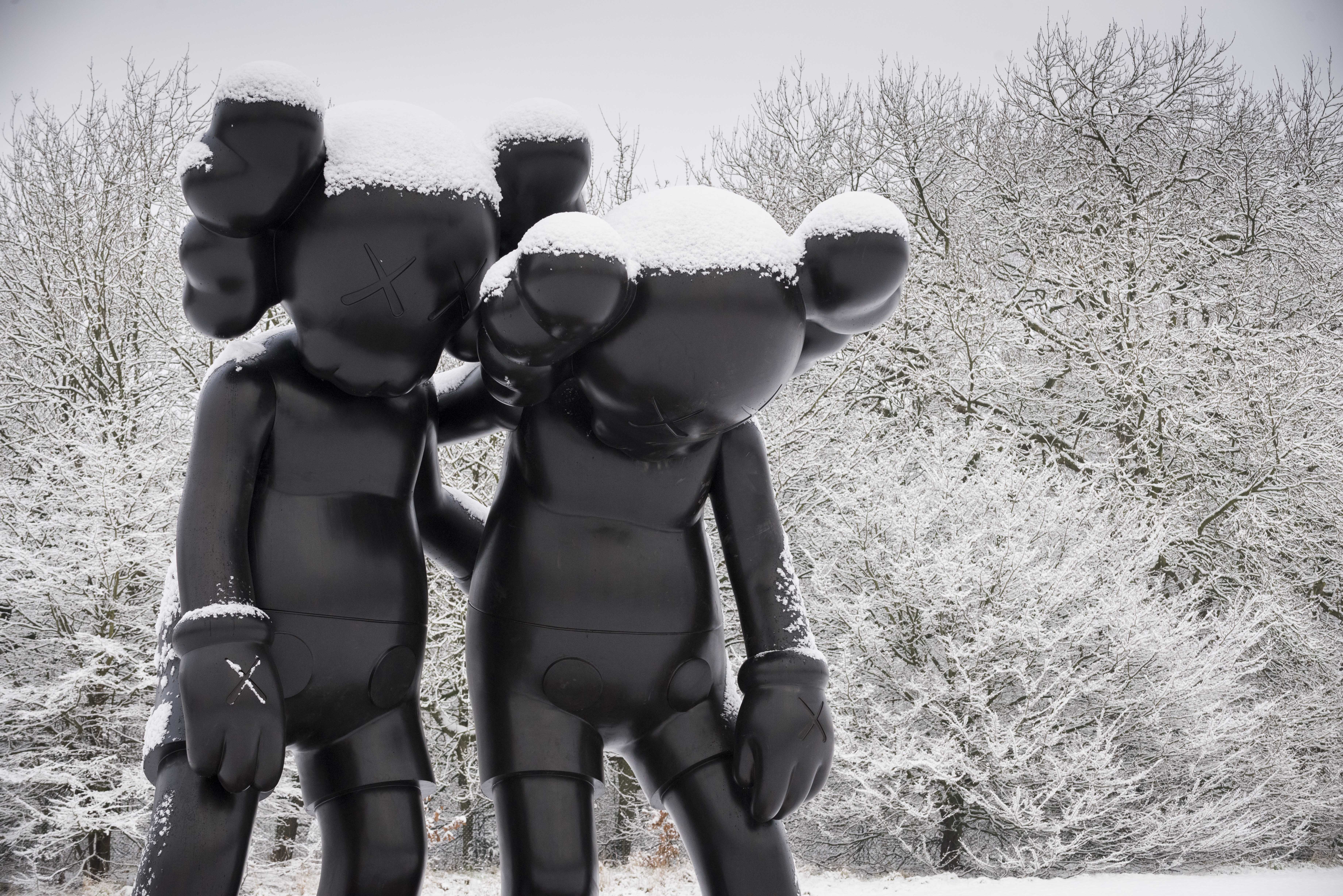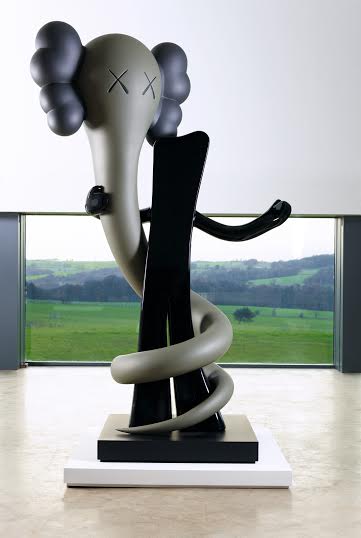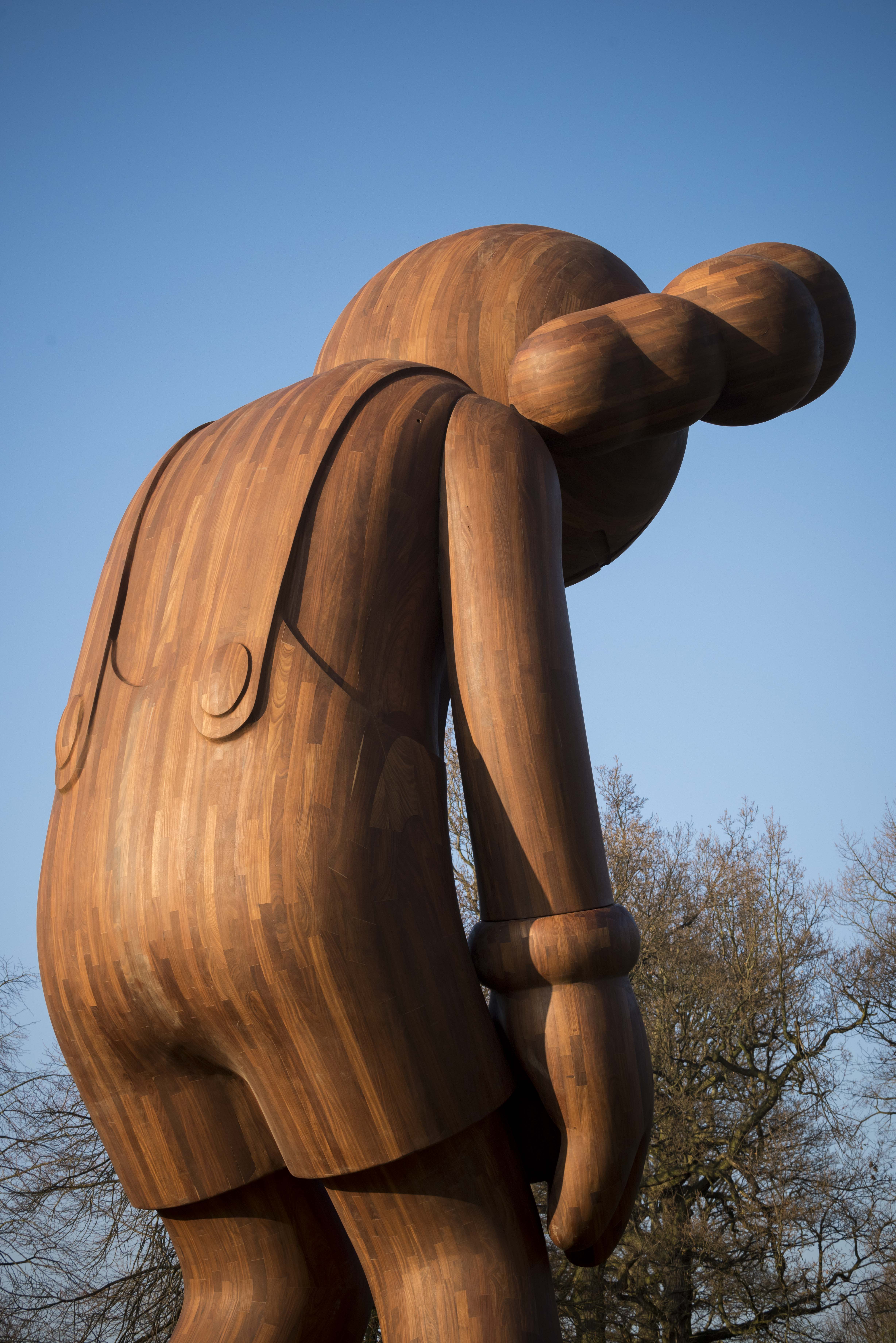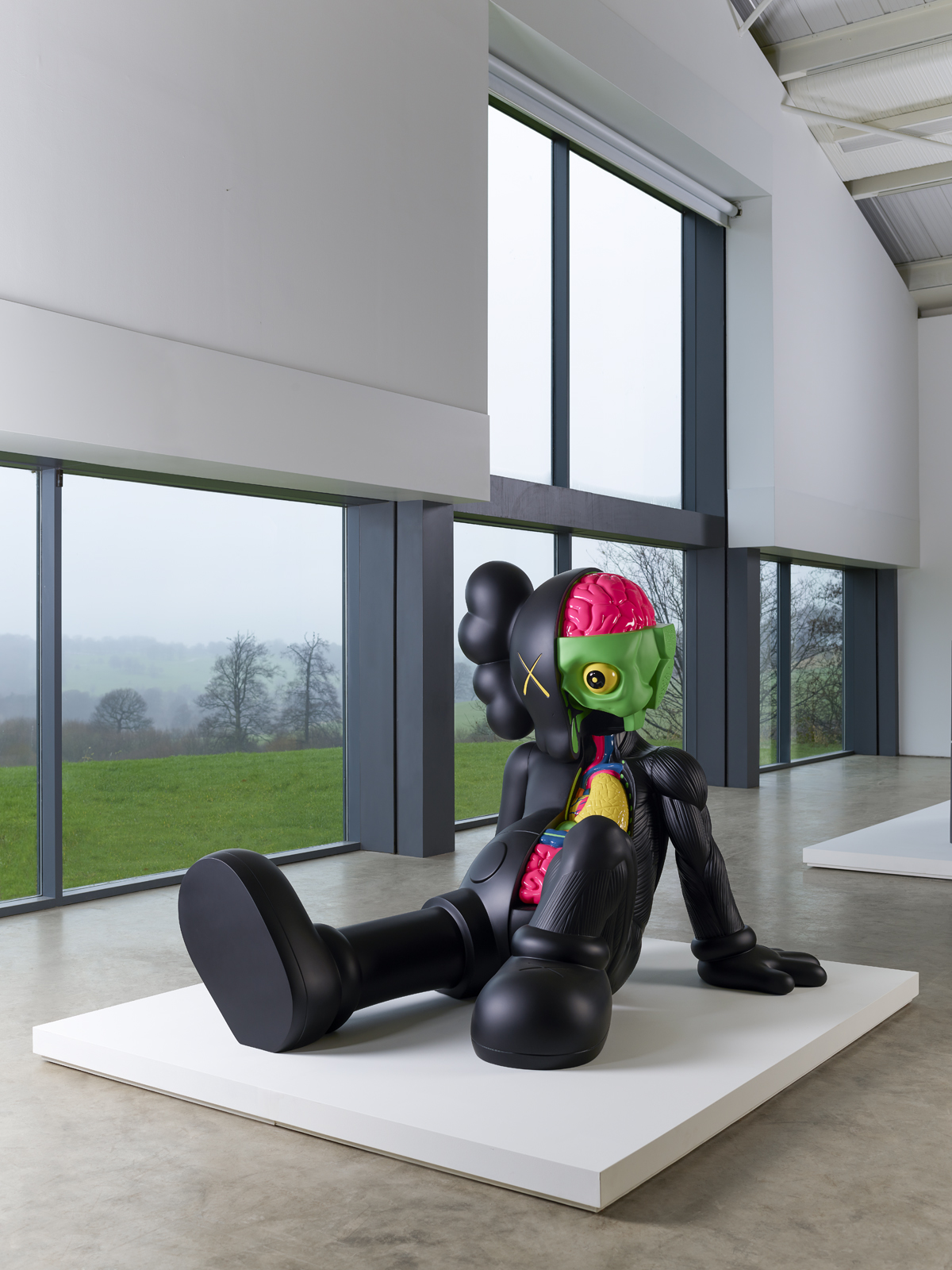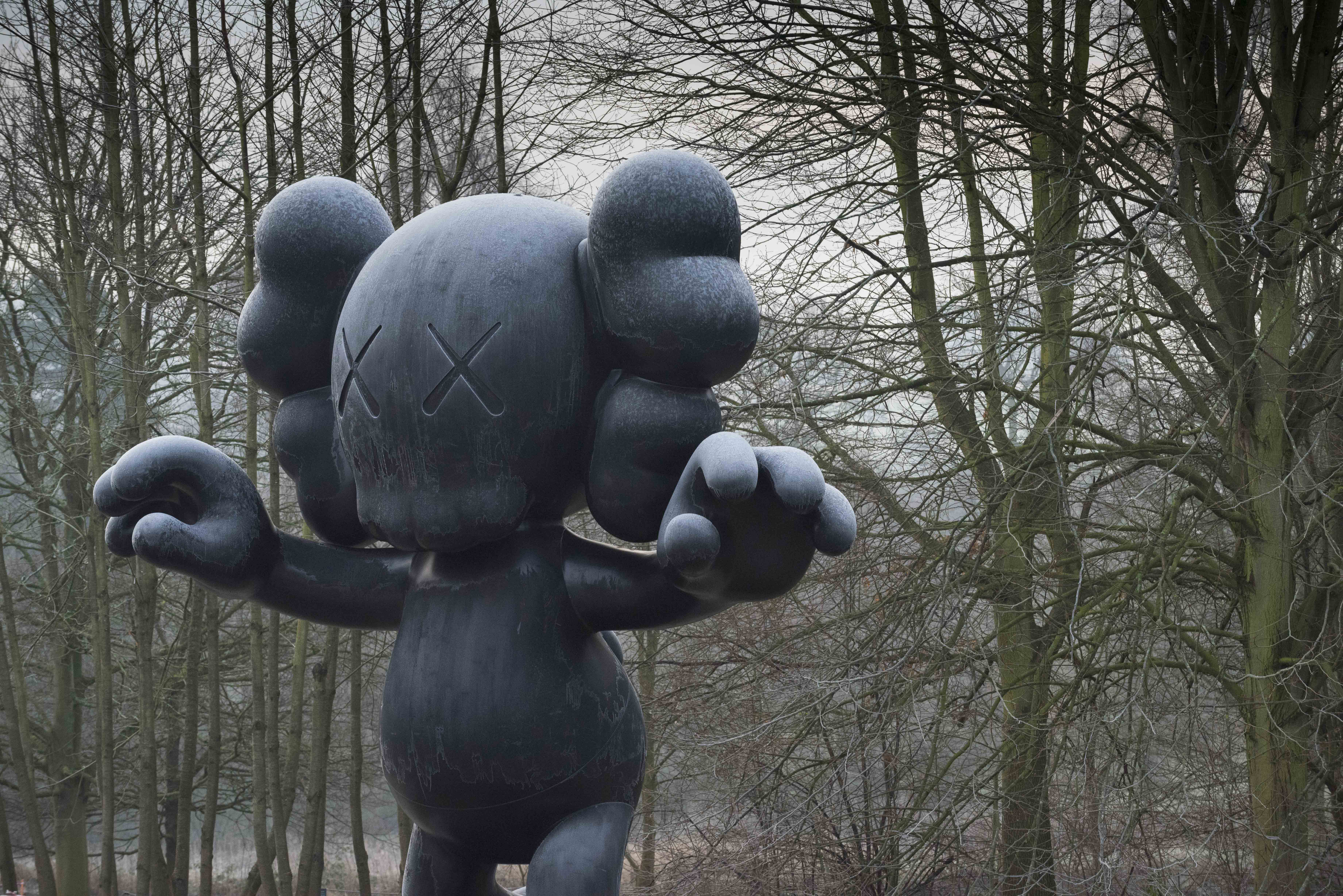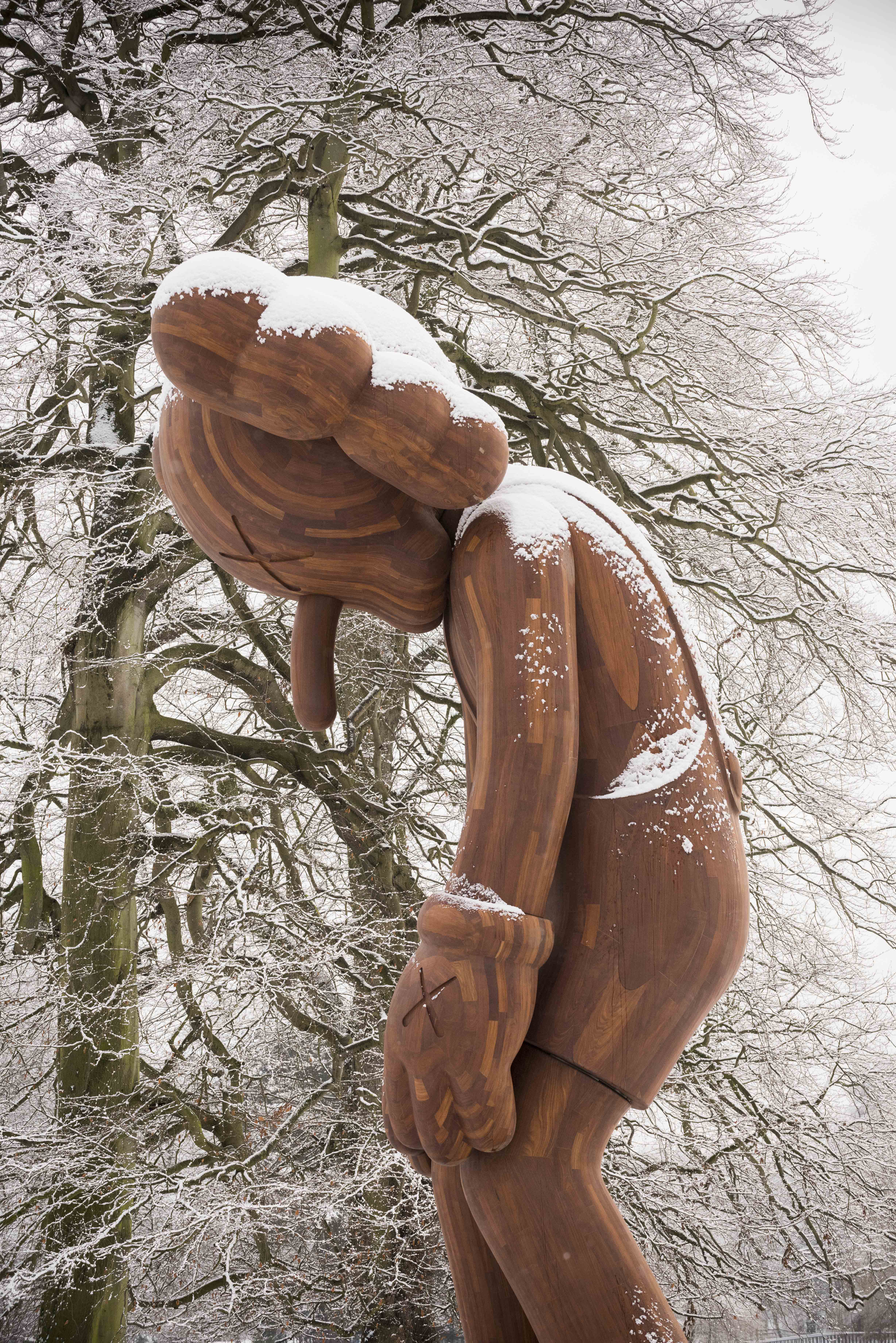There are certain things you don’t expect to find too often in the rolling, sun-splattered British hills. A looming selection of 8-metre-high figures–part Mickey Mouse, part Pinocchio, entirely heart wrenching–huddled in the countryside are one such thing. Yet, last week KAWS found a new home at Yorkshire Sculpture Park.
KAWS has long straddled a line between many different areas of art and wider culture. Whether sketching over images of Kate Moss and Candice Swanepoel for fashion editorials, collaborating with Kanye on album art or showing at Frieze London’s sculpture park, the artist seems to have a place and, most importantly, one solid image. KAWS is KAWS is KAWS.
My own attitude towards his work has always been pretty unchangeable. I have seen it as a comment on the commercial world, as a tug of war with brands–sometimes collaborating, sometimes jibing–and of course I have always noticed the strong sense of design. What I had never felt, was a stirring of emotion.
It’s in YSP’s Longside Gallery that this sense of compassion first hits. These cross-eyed characters–Companion, Chum et al–in the flesh, are altogether more warm and intriguing than one might expect. Of course the sense of design remains a powerful element; painted metal appearing as spotless matt plastic, sheened luminous organs spilling out of bodies with the same synthetic quality as Barbie’s privates. But this perfection of design doesn’t spell a coldness, as I thought it might (indeed, as I thought it was intended to do).
The largest of the group, a towering Companion, sits head in hands, feet slightly pigeon-toed, cross-bone ears almost touching the open ceiling of the space. He looks desperately in need of cuddle. It’s almost as though the larger the sculptures get, the more alone they look–far from imposing they become vulnerable, enormous children in need of care. Another Companion stands in the centre of the room, two small Companion children tucked under his arms. The way they all hold onto each other it’s easy to imagine they are fleeing a horrible fate. But, it’s also been suggested that these are a model of the artist, in his latest role of father.
There is certainly an ambiguity to these characters; there is plenty of room for viewer-led narrative. The artist doesn’t seem to agree when I suggest that there is an overriding sense of darkness to the work. But, then again, he says, he doesn’t like people calling them ‘cute’ either. Perhaps this sense of ambiguity is throughly intended, only the artist really knowing what each of his intimately known characters is going through. (Perhaps this darkness is a projection I need to look a little closer at myself.)
In the park’s sprawling field are a selection of six more Companion sculptures, all made from wood, and ranging from six to ten metres high. The newest natural wood sculpture is a feat of craftsmanship, the highly polished surface and throughly considered grain patterns putting it on a par with many of KAWS’s Pop predecessors. Here too, I feel a wave of sadness. Flashes of Pinocchio boys as donkeys come to mind; wider ideas of humiliation and social shame. They’re screaming for help.
But, then three ladies walk by and one comments; ‘Isn’t it nice that these sculptures are so innocent, I’d be happy to bring my grandchildren to see this. They’re so uplifting.’ ‘Yes’, another smiles, ‘this one is just so lovely’.
Think you’ve got KAWS’ number? Maybe he’s not so easily defined after all.
KAWS is showing at Yorkshire Sculpture Park until 12 June 2016

